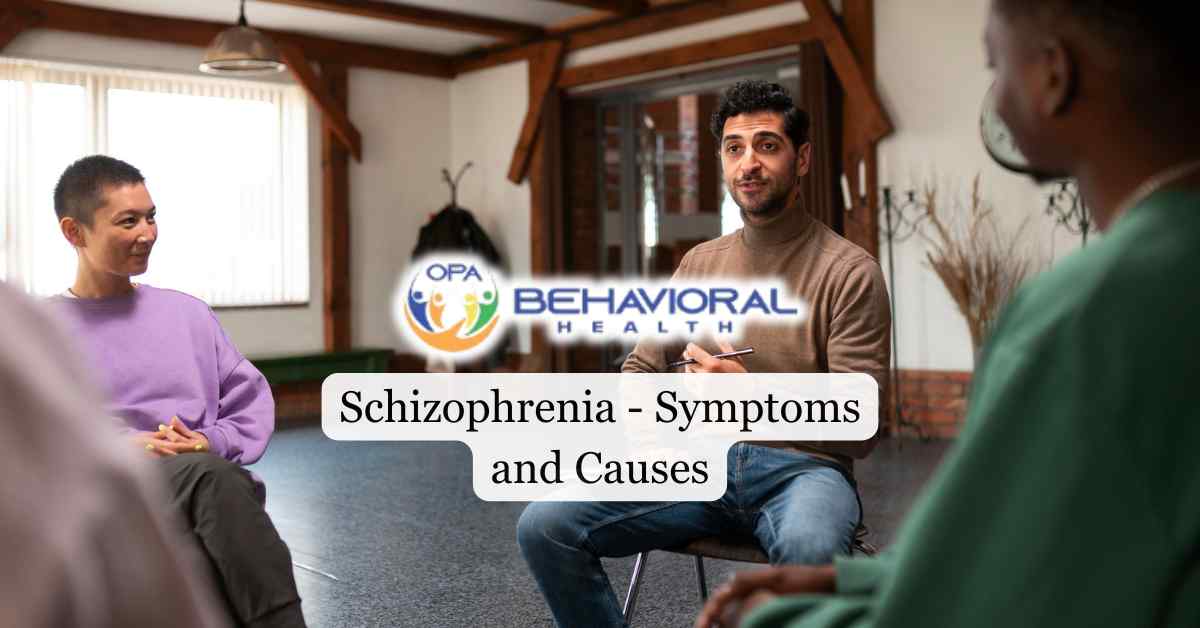Schizophrenia is a multifaceted and frequently misunderstood mental health condition that impacts how individuals interpret reality. In the past, this disorder was classified into separate subtypes, each with its own distinct set of symptoms and difficulties. However, as our knowledge of schizophrenia has progressed, so has the approach to its classification and treatment.
This article explores the various types of schizophrenia, examining both the historical subtypes and the contemporary spectrum approach that reflects the diverse experiences of those living with this condition.

Historical Classification vs. Current Understanding
Before the DSM-5‘s implementation in 2013, schizophrenia was classified into five distinct subtypes: paranoid, disorganized, residual, catatonic, and undifferentiated.
However, this classification system was found to be unreliable and inconsistent for accurate diagnosis and treatment planning. The DSM-5 has since moved away from these subtypes, recognizing schizophrenia as a spectrum disorder encompassing a range of conditions with overlapping symptoms.
The current understanding of schizophrenia spectrum disorders emphasizes the complexity and variability of presentations, leading to more individualized approaches to diagnosis and treatment.
The DSM-5 criteria now require a diagnosis based on the presence of two or more symptoms for at least one month, focusing on broader diagnostic categories rather than fixed subtypes.
This shift acknowledges that each person’s manifestation of schizophrenia is unique, necessitating personalized care strategies.
Our team of mental health experts at OPA Behavioral Health in Florida can provide individuals with accurate schizophrenia diagnosis and appropriate treatment plan tailored to their specific condition and experiences.
Paranoid Schizophrenia
Paranoid schizophrenia, the most prevalent type of schizophrenia, is characterized by persistent delusions and hallucinations, often revolving around themes of persecution or grandiosity.
You’ll find that individuals with paranoid schizophrenia typically experience symptom onset later in life compared to other forms, usually in late adolescence or early adulthood.
Despite the presence of delusions and hallucinations, those with paranoid schizophrenia often maintain relatively intact speech and emotional expression, although they may exhibit significant anxiety and suspiciousness.
To receive a diagnosis of paranoid schizophrenia, you must experience at least two symptoms, such as delusions or hallucinations, for a minimum of one month, with overall functioning impacted for at least six months.
It’s important to note that the prognosis for individuals with paranoid schizophrenia varies, as some may achieve remission, while others may experience chronic symptoms or relapses over time.
Disorganized (Hebephrenic) Schizophrenia
This type of schizophrenia typically develops between the ages of 15 and 25, marked by disorganized thoughts, behaviors, and emotions. You may experience short-lasting delusions and hallucinations, but your emotional expression could be minimal or absent.
Disorganized speech is a hallmark of this disorder, making your communication seem incoherent or illogical to others. This can lead to difficulties in being understood and forming meaningful connections. You may also struggle with goal-directed behavior, resulting in impaired functioning in daily activities and social interactions.
Odd or inappropriate emotional responses are common, further complicating your social relationships and overall well-being.
Catatonic Schizophrenia
Catatonic schizophrenia, one of the rarest forms of the disorder, is marked by striking motor abnormalities that can dramatically impact your daily life. You may experience extremes in movement, from rigid immobility in a catatonic stupor to frenzied excitement. These unusual motor behaviors can shift abruptly, leaving you unable to communicate or care for yourself.
Echolalia and echopraxia, where you repeat others’ words or mimic their actions, are also common.
Due to the severity of symptoms, catatonic schizophrenia carries a higher risk of complications like malnutrition and exhaustion. Treatment typically involves a combination of antipsychotic medications to alleviate psychotic symptoms and manage motor disturbances.
Benzodiazepines may be prescribed to reduce agitation and promote relaxation. Cognitive behavioral therapy can help you develop coping strategies and improve functioning. Supportive care is crucial to ensure your safety and well-being during acute episodes.

Undifferentiated Schizophrenia
Unlike other historical subtypes, it’s characterized by a combination of symptoms from multiple types of schizophrenia without fitting neatly into any specific category.
If you’re diagnosed with undifferentiated schizophrenia, you may exhibit both positive symptoms, like hallucinations or delusions, and negative symptoms, such as social withdrawal and lack of motivation.
It’s important to recognize that your diagnosis may change over time as symptoms evolve or become more defined, reflecting the spectrum nature of schizophrenia.
Undifferentiated schizophrenia doesn’t have a distinct symptom pattern and can present varying symptoms among different individuals, making diagnosis and treatment planning complex. This type was more commonly recognized in the DSM-IV but has since been subsumed under the broader classification of schizophrenia in the DSM-5.
Residual Schizophrenia
Many individuals with schizophrenia experience residual symptoms, a phase characterized by the absence of prominent positive symptoms but the persistence of negative symptoms. If you’ve been diagnosed with residual schizophrenia, you may notice a marked decrease in psychotic symptoms like hallucinations and delusions. However, negative symptoms of schizophrenia, such as diminished emotional expression, social withdrawal, and lack of motivation, may still be present.
It’s important to understand that residual schizophrenia is a mental health condition that can significantly impact your daily life and relationships. You may struggle with cognitive impairments, odd beliefs, and poor hygiene. Although the acute episodes of psychosis have subsided, the lingering effects can make it challenging to function optimally.
Remember that the diagnosis of schizophrenia can evolve over time as your symptoms change. Approximately 20% of individuals with schizophrenia experience residual symptoms following their initial psychotic episode.
Final Thoughts from OPA Behavioral Health
By moving away from a categorical approach, mental health professionals can focus on assessing and treating the specific symptoms and challenges faced by each individual with schizophrenia.
At OPA Behavioral Health, we are dedicated to providing comprehensive support tailored to each individual’s unique needs. Our approach integrates compassionate care with cutting-edge treatments, ensuring that every patient receives the attention and resources necessary for their mental health journey. Whether through in-person visits or convenient telemedicine services, our experienced team is here to help you or your loved ones navigate the challenges of schizophrenia and related disorders.








